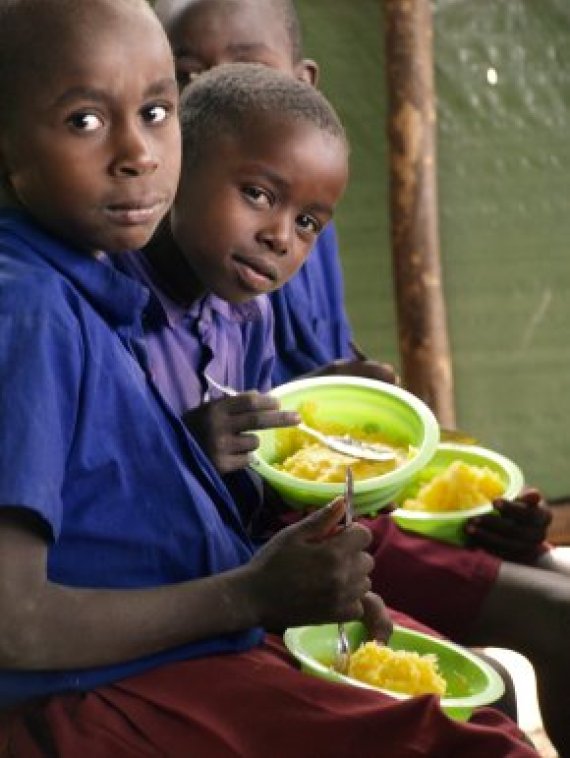Children eating yellow cassave. Photo: Elise Talsma, 2012
Elise Talsma, a Human Nutrition PhD student, demonstrated this in a field experi-ment in Kenya. She will receive a doctorate for her findings on 3 July.
One hundred million children around the world do not get enough vitamin A, with about 150,000 children dying as a result, directly or indirectly, of this. Vitamin A deficiency makes children more susceptible to infection and can lead to night blindness in the most serious cases. While supplements are distributed through international programmes, they do not reach all children by a long way.
Talsma wanted to know whether staple foods rich in vitamins could combat deficiency, so she introduced a yellow cassava variant in a poor district in Kenya. This cassava contains far more beta-carotene (which our body converts into vitamin A) than the white cassava you see all over Africa.
Demonstrating that food can be effective is very difficult
Elise Talsma
In Talsma’s experiment, she tracked 342 children with mild vitamin deficiency. They were divided into three groups. They all got a bowl of cassava puree every morning for 19 weeks: the local white cassava, the white variant with a beta-carotene supplement or the yellow cassava. The vitamin A in their blood was measured before and after the trial.
In the end, the children who had eaten the yellow cassava or the white cassava with the beta-caro-tene supplement had slightly more vitamin A in their blood than the control group. However, there was no significant drop in the number with vitamin deficiency. But Talsma says this is still a positive result as it is the first proof that yellow cassava improves people’s vitamin status. ‘Demonstrating that food can be effective is very difficult,’ she explains. ‘Food simply isn’t as powerful as a pill.’

